Racism

Til chains, chairs, and chambers are no longer justices’ end
and my fellow American can call me brother, regardless of my skin,
I’m still breathing.
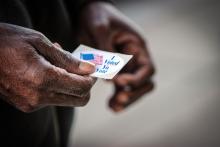
Our faith is offended by these assaults that contradict the biblical commands to love and protect our neighbors. Our conscience is seared by the lies and strategies of hateful politics that will lead to more and more violence in this country and put the soul of our nation in jeopardy. Words matter and hateful words do lead to violence. Our commitment to our brothers and sisters under attack will lead us to pray, stand, act, and vote against the politics of fear and hate, because of our faith and patriotism.

Shirer’s comments and white evangelicals’ use of her statements are problematic because this way of thinking has been used against African-American Christians for years to prevent us from seeking justice and equality. It’s also used to neutralize our message that our lives matter too. White evangelicals use this way of thinking to deter people of color from protesting and challenging the political status quo. It’s a lazy attempt to avoid issues of race. Many pastors and church leaders don’t want to discuss race and how it affects their churches and denominations, especially during such a heated political climate. It seems that mainline churches would like people of color in their congregations to shut up about race and assimilate into their church culture masked as Kingdom identity.

For too many Christians, the argument that we should love others because Jesus told us to becomes a begrudging obligation rather than a willful choice. If the only thing that drives Christians to accept disenfranchised people is Jesus, there is a lack of authenticity in that connection. The implication is that without Jesus, there would be no intrinsic value to diversity.
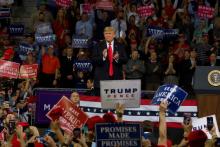
A new study published in Christianity Today claims to debunk dominant narratives around the 81 percent of white evangelicals who voted for Donald Trump in 2016. New York Times columnist David Brooks shared it and concluded: “Many Evangelicals voted for Trump, reluctantly, because of economics and health care more than abortion and social issues.” If this sounds too good to be true, it’s because it is.

White Christians benefit the most by being nationalistic and patriotic, because to do so upholds the methods of “law” that keep their societal privileges in place. So while America — it’s governmental machinations and economy — serves to continually bless and protect white Americans, it hasn’t done so for others. Incarceration rates, a vast history of enforced racism by the legislative, judicial, and justice branches of government, the mistreatment of people of color within the military, and the brutalization by police show just how one-sided our country has benefited particular groups of people because of race. As white Christians blissfully sing ‘God Bless America’ in their sanctuaries adorned with American flags, they look upon their country — and its many structures — with nostalgic pride, while others see betrayal, hurt, and suffering.
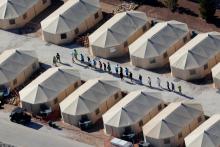
These attacks on people’s innate dignity and sacred worth assault our most cherished moral and religious values. We read in Genesis that all people are made in the image of God. In Paul’s letters, he proclaims that in God earthly divisions fall away, that all people form part of God’s body. Jesus himself promises: Whatever you do to the least of these, you do to me. Attempts to excuse human rights abuses committed against some people are thus not just unconstitutional — they assault God by denigrating and desecrating that divine, indwelling spark.

Christianity transformed from a faith reliant on Jesus to a civic religion obsessed with obtaining partisan power. This co-opting of Jesus — manipulating His gospel of love and redemption to fit the narrative of an expanding American empire, specifically to maintain the colonial stronghold of white supremacy — fits a historical pattern.

In the spring prior to the Charleston church massacre, during my daily commute to my older daughter’s school, I noticed a wad of faded red fabric drooping from a flagpole outside of a stranger’s house.
It couldn’t be.
I pulled right to slow down in my lane and looked once and then again to verify. There, tucked beneath the folds of the familiar stars and stripes, two blue lines crossed over the red fabric with the telltale white stars.

THE DEDICATION this spring of a memorial in Montgomery, Ala., to the more than 4,400 African Americans who were lynched in this country between the Civil War and World War II has brought renewed national attention to a historical outrage. Melanie Morrison’s Murder on Shades Mountain: The Legal Lynching of Willie Peterson and the Struggle for Justice in Jim Crow Birmingham reminds us that not all such acts of terrorism and brutality were carried out by white mobs under trees and the cover of darkness. Some were perpetrated in courtrooms in broad daylight.
This meticulously researched book skillfully weaves glimpses of Morrison’s family history into a riveting account of a horrific injustice. On Aug. 4, 1931, three young white women were attacked on a secluded ridge outside Birmingham, Ala. The only survivor, 18-year-old Nell Williams, related that she, her sister, and their friend had been held captive for four hours and “shot by a Negro.” During the largest search party in the county’s history, armed white vigilantes roamed the streets, black businesses were set on fire, African-American men were dragged off trains and out of their beds, with dozens detained, and at least three were murdered.
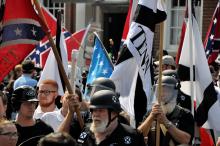
According to The Root, Long says he was acting in self-defense, using spray paint and fire after a white supremacist threatened him with a gun. Long alleges that marcher Richard Preston aimed a gun at his head and fired a bullet into the ground.
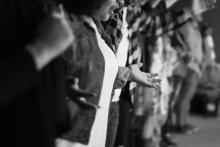
All over the place in American Christianity, we are asking what is appropriate, what will work and what will not work anymore, how women and people of color are to be treated, what is expected of our male leaders. We are re-wiring things and tearing some things down. We’re making room for a new kind of faith, detaching it from the fear-based faith we were taught as children.

MY OLDEST SON is about to turn 11, which means he is old enough to both recognize and call out the hypocrisies of the adult world. Here are two recent examples:
- While watching an NBA game, he says that adults are always saying that boys shouldn’t judge girls by their looks, but what else are you supposed to be doing while cheerleaders are doing their moves? And what do cheerleaders have to do with basketball anyway?
- As my wife and I are singing along to old-school hip-hop in the car, he says that if boys are not supposed to talk about girls’ body parts in ways that make them feel like objects, why is it okay for this guy to sing about liking “big butts”? And why is it okay for us—his parents—to be singing along?
These questions make my wife and me squirm. Generally, we try to face things square on, but on the subject of why we tolerate certain messages in the pop culture that we like, we go mum.
But something in Molly Ringwald’s New Yorker piece this spring about watching her ’80s-era Brat Pack movies with her then 10-year-old daughter made me think more deeply about the whole dynamic. Ringwald writes about how uncomfortable she was being confronted by the racist and sexist themes in those movies. The horribly racist caricature of Long Duk Dong in Sixteen Candles. The under-the-table panties scene in The Breakfast Club. The casual ways boys in those movies talked about trading drunk girls as if it were normal.

MANY PEOPLE TALK about the injustices in the world but do nothing to rectify them. This can’t be said about the following five leaders—pastors, activists, lawyers, businesspeople, and artists—who Sojourners will recognize as “movement honorees” at the June 13-15 Summit 2018. These innovators are doing what Jesus did: taking God’s vision of the world and spurring others toward that ideal. Rev. Brittany Caine-Conley
Rev. Brittany Caine-Conley
“I learned pretty early about myself,” Caine-Conley told Sojourners, “that the concepts of justice and righteousness were really important concepts to me.”
Cue Aug. 12, 2017. While much of the nation watched from afar the racially charged violence in Charlottesville, Caine-Conley encountered the physical threats in person as she protested the white nationalist rally in her city. Caine-Conley and other protesters were shoved by supporters of the Unite the Right rally. And the car that a Nazi sympathizer plowed—apparently on purpose—into a crowd of protesters, killing 32-year-old Heather Heyer, also injured an affiliate of Congregate Charlottesville, the local faith-based social justice network Caine-Conley, United Church of Christ minister, helped organize.
“It was the most horrible thing I’ve ever experienced,” Caine-Conley said to Vox about seeing the wounded, who were lying in the street in the car’s wake.
And yet Caine-Conley believes it is her duty to be wherever tragedies like this happen—to put herself in harm’s way.

THE CIVIL RIGHTS movement. #BlackLivesMatter. Racial reconciliation. It would be easy for me to imagine the words of Eliza in the musical “Hamilton” and sing, “I’m erasing myself from the narrative.”
At first glance, those statements, movements, and conversations might be mistakenly boiled down to division and brokenness between two Americas—one black, one white.
But I’m neither. I’m “yellow.”
I didn’t choose to erase myself in history, but it’s what I learned. Asian Americans weren’t erased from American history as much as we just didn’t exist in the Plymouth Rock story of East Coast immigration, with its emphasis on Europe’s poor and hungry “huddled masses.” We learned that “assimilation” was as much about becoming “white” as it was about becoming “American.” We learned that the civil rights movement was a fight for equal rights for black Americans, with little connection to “others” like myself. There was no category for someone who looked like me unless it was Oriental, chink, or gook—racial slurs I first heard as a child on suburban playgrounds (and still hear as an adult), slurs tied to a history and wars I knew very little about. In America, race is a social construct divided most simply between black and white.
I also learned that the best I could hope for was to become a model minority, an “honorary white” who would never be considered a “real” American.
So I just didn’t become one. In an act of rebellion, I chose not to become a naturalized U.S. citizen until a few years ago. In the process I learned what it means to opt into a binary conversation with a different, clear, defined perspective. I needed to learn who I was, created as a Korean-American woman carrying God’s image. I needed to learn that Jesus, Mary, Martha, and Esther weren’t blue-eyed or blonde.
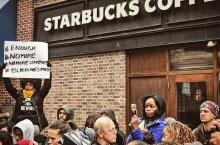
Ross said that as an African-American man he was acutely aware of implicit bias. "We are committed to fair and unbiased policing and anything less than that will not be tolerated in this department," he said.
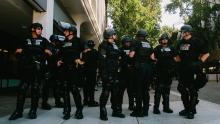
“It is an atrocity that an unarmed young man was shot at twenty times in his own backyard and shows the urgent need in these times for intervention against police misconduct. We will call for a complete and thorough investigation into this young man’s death," Rev. Al Sharpton said in a statement.
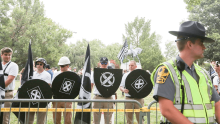
Solidarity Cville, a “community defense network” of multiple local activist groups, is pressing Charlottesville Commonwealth Attorney, Joe Platania, to drop all charges against Harris. In addition to holding a vigil outside the police department in the District Courthouse on Thursday evening, the group is preparing a sustained response to Harris’ trial on Friday.
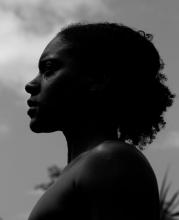
As a black woman, my confidence is not just perceived as arrogance, but as intimidating and angry.

Mason found that the magazine virtually ignored people of color in the U.S. until the 1970s who were not laborers and domestic workers, and consistently perpetuated people of color from foreign lands as "exotics, famously and frequently unclothed, happy hunters, noble savages—every type of cliché."